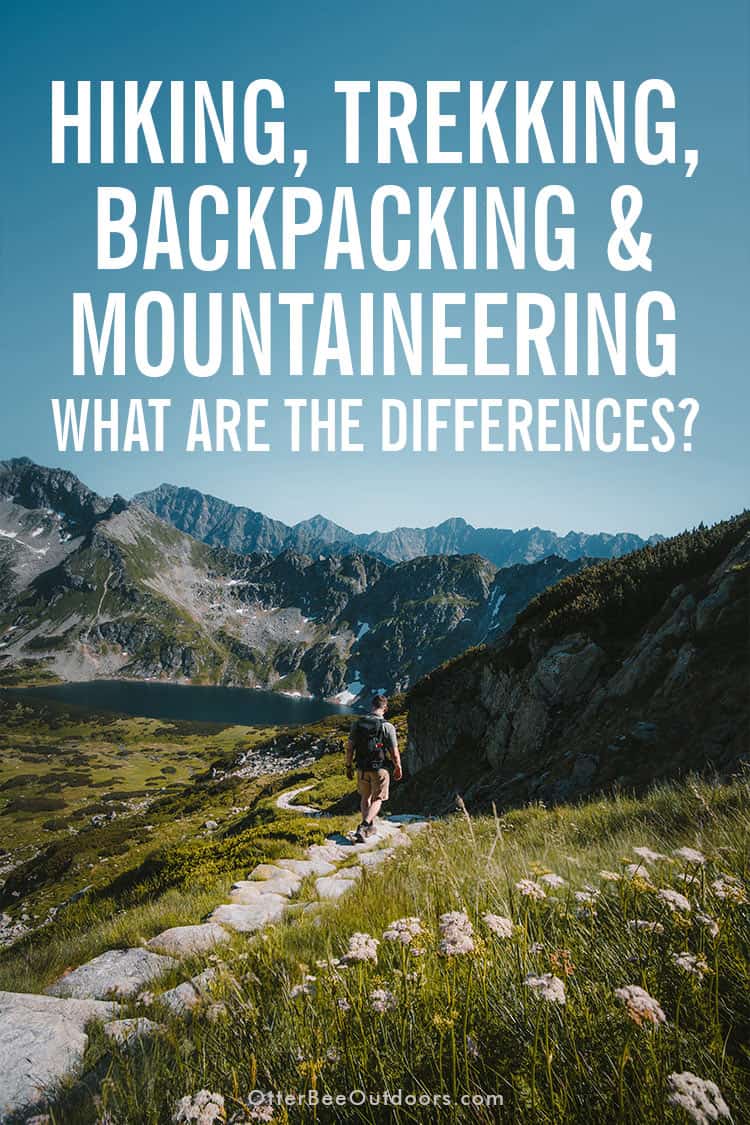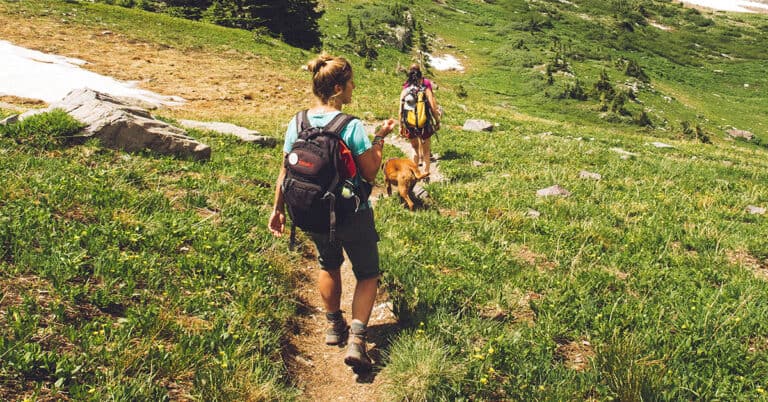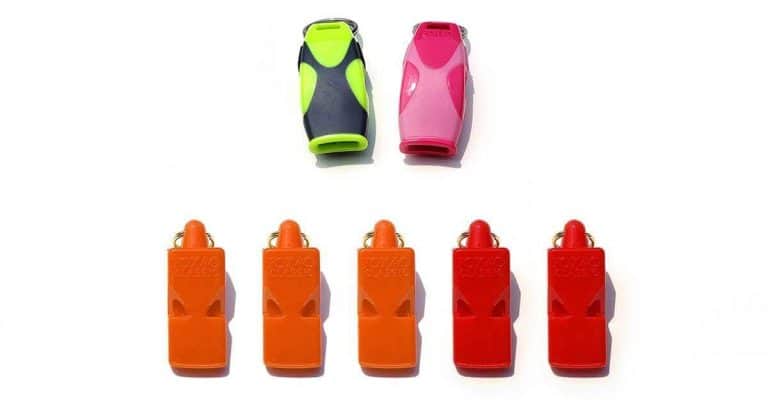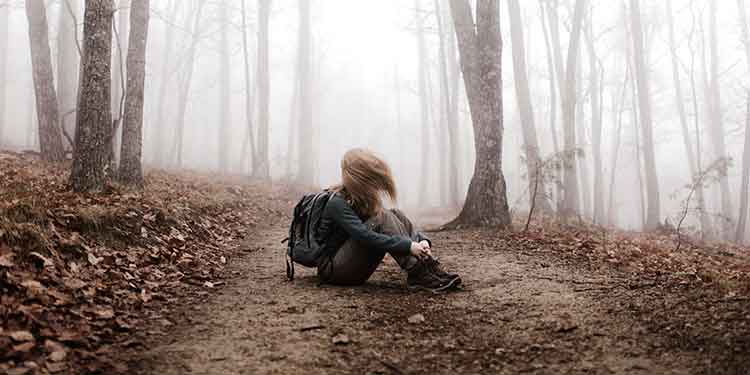Disclosure: I am compensated for purchases made through some links on this site. Click for details.
I’ve often heard the terms hiking, trekking, backpacking, and mountaineering used interchangeably.
What about you?
These outdoor activities have some basic similarities but the differences can’t be ignored especially if you’re going to choose the right adventure when heading out alone, with a buddy, or group whether it’s a local group, hiking tour, or hiking vacation. Making the wrong choice can get you in over your head.
Hiking is walking in nature for less than a day. Trekking is a remote multi-day journey for a longer distance than a hike. Backpacking is a multi-day hike or trek where a tent, sleeping bag, food, cooking equipment, and water are carried. Mountaineering is the multi-day adventure to reach a mountain’s summit using hiking, climbing, scrambling, and camping skills.
Let’s look at hiking, trekking, backpacking, and mountaineering in detail to determine which best fits your skills and abilities. Each of these activities differs in terrain, difficulty, and equipment needed.
After all, if you’re lacking in technical knowledge or specific gear, some of these activities can put you in danger and we don’t want that.
Hiking
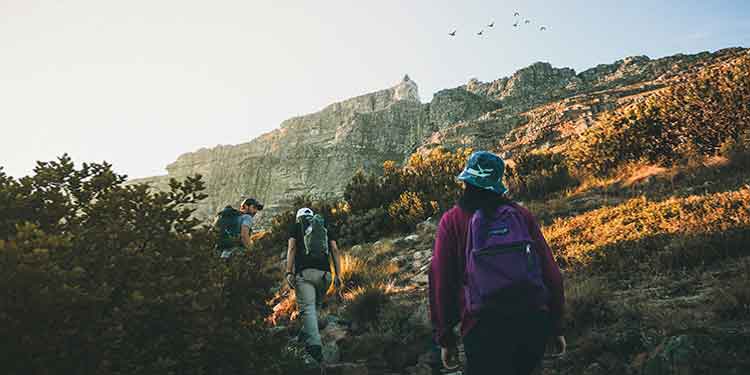
Hiking is the act of going for a long walk in the countryside or wilderness. Its terrain may vary from easy to difficult and is not paved. No minimum time or distance is specified as a requirement in defining a hike though hikes are typically not more than a day adventure.
Paved paths would be considered a walk.
Hikes are typically taken on manmade trails in a park with a specified route that is visibly marked and typically documented on a park map. These trails have a start and endpoint that transverse a distance or loop back to where you begin. This beginning point is referred to as the trailhead.
When evaluating the pursuits of hiking, trekking, backpacking, and mountaineering, hiking is the easiest and is the foundation on which each of these has developed making trekking, backpacking, and mountaineering all special classes of hiking.
No technical knowledge is required for hiking, though you need to start on easier trails and work your way up to more difficult ones especially if you’re hiking alone. The length of the hike, the terrain, the steepness of the slopes, and the elevation all play a role in a hike’s difficulty. Start with shorter hikes on level terrain at lower elevations and work your way up to more difficult hikes over time.
Minimal gear and preparation are required for hiking. Research your intended hike before heading out to make sure it’s appropriate for your physical ability and to determine what might be needed on your journey. A backpack, water, food, proper clothing and footwear, jacket, map, and first-aid kit are a few of the items that you might need.
A hike typically doesn’t require you to carry heavy gear like trekking, backpacking or moutaineering. Next, we’ll discover the difference between hiking and trekking.
Related content: What Is The Purpose Of Hiking?
Trekking
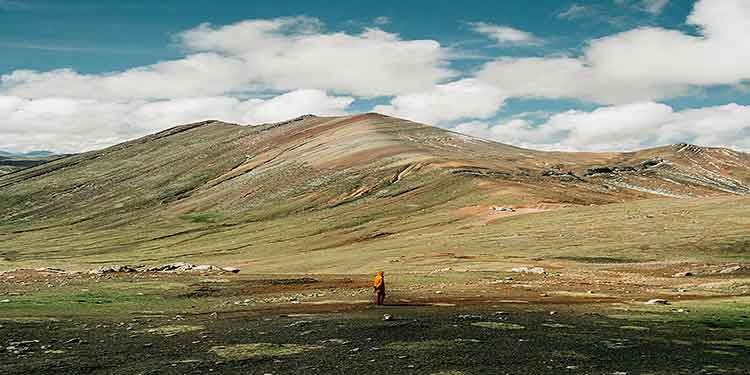
Hiking vs trekking… A trek is a multiple-day journey in a remote location that transverses a much longer distance than a hike with beginning and ending points that are rarely the same. Treks often follow a well-marked trail that’s broken into segments with lodging and food along the way.
Each segment is essentially a day hike over difficult terrain that could involve climate changes due to elevation and wind, rain, snow, or other frozen precipitation.
For a trek, you must be in better physical shape than a typical hike and the process of preparation is far greater. The gear involved is in-between that of hiking and backpacking.
If your trek is arranged for through a travel agency or outfitter, you’ll carry your day backpack. They will see that all other essentials like food, your extra clothes, and camping equipment reach the required destinations.
If you’re trekking in a foreign country, consider booking a trekking tour or trekking vacation through a travel company or hiring a guide to arrange food, lodging, and safety along your way.
Backpacking
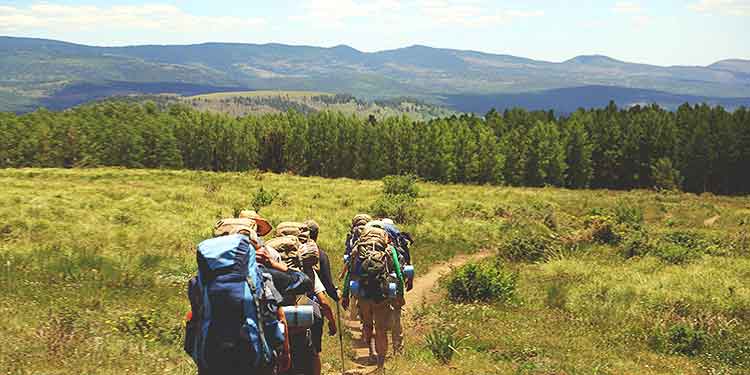
Backpacking is a multiple-day journey in a remote location that transverses a longer distance with beginning and ending points that are rarely the same. Backpackers carry all equipment needed for the adventure including a tent, sleeping bag, food, cooking equipment, water, and more.
The trails they choose are often over difficult terrain and they may or may not be marked clearly. Trails could even be nonexistent leaving backpackers to forge their own route.
Trekking vs backpacking… The biggest difference between trekking and backpacking is that you sleep in the wilderness and carry your sleeping gear, food for days, and kitchen gear.
Backpacking requires a greater level of preparedness, physical strength, endurance, and survival skills than hiking or trekking. Like longer hikes and treks you should always pay attention to the possibility of climate change due to elevation. Be prepared for the possibilities of rain, sleet, hail, snow, and wind. Even wind carrying sand or debris.
Thru-Hikers & Section-Hikers
Some backpackers may be referred to as a thru-hiker or section-hiker.
Thru-hikers backpack an established long-distance trail like the Appalachian Trail from end to end within one calendar year and without a hiatus. These long-distance hikes often take months to complete.
Section-hikers backpack an established long-distance trail like the Appalachian Trail from end to end in sections. Between each section, they will go back to their day jobs or other activities.
Mountaineering
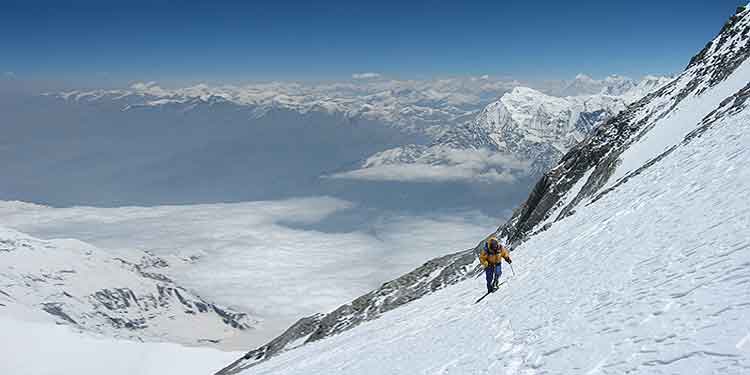
When trekking or backpacking you may be in hilly or mountainous regions, this, however, is far different from mountaineering. Mountaineering isn’t hiking up a mountain trail to its peak. Mountaineering is far more challenging!
Mountaineering is the multi-day adventure of reaching a mountain’s summit through the use of skills in hiking, climbing, scrambling, and camping. A high level of preparation, training, technical skills, and special gear is required to survive the harsh conditions in mountaineering.
Mountaineers often ascend to summits 16,000ft above sea level and their bodies must be able to endure great effort with the low oxygen levels at this altitude. They can easily experience altitude sickness if they have not acclimated themselves to activity at these heights.1
Weather is also a huge factor for mountaineers. Subfreezing temperatures, high winds, and snowstorms add to the difficulty of this sport.
If you’re new to mountaineering, go through mountaineering training first and seek out an experienced guide. You must develop the skills, knowledge of equipment, and physical strength to survive the difficult conditions encountered while mountaineering.
Mountaineering vs backpacking… The difference between mountaineering and backpacking is that a mountaineer’s skills must not only include those of a backpacker but also far-advanced skills in climbing rock and ice, scrambling, crossing glaciers, and camping in extremely harsh conditions.
Mountaineering is for the highly experienced only.
Which One Should You Choose?
Knowing the difference between hiking, trekking, backpacking, and mountaineering can keep you safe when choosing your next outdoor adventure.
With family, my time is limited. This makes hiking my favorite. It allows me to get away into nature without any great imposition on my family. Or better yet, I can bring the family along!
If you’re a novice or have limited time for adventures, hiking may be your best choice as well.
If you’ve moved on from those short, easy day hikes to long, difficult ones, you may want to consider the challenge of trekking or backpacking. With the addition of a little extra gear, you’ll be ready for the trail!
Mountaineering? Well, if you have the skills and physical ability, I’m in awe of you. Make sure you’ve developed your mountaineering skills and you’re ready for the challenge. What an adventure!
No matter what your choice. Hiking alone on many of these adventures can be unsafe. Consider sharing the fun by hiking with friends, family, or groups.
Related content:
